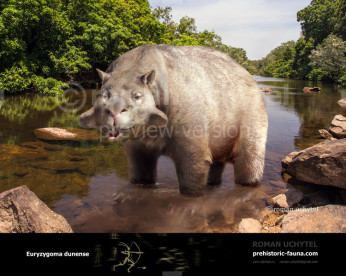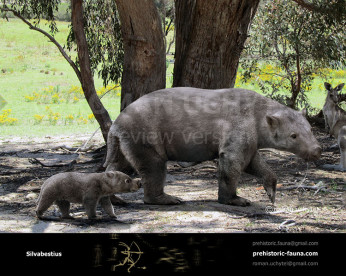Zygomaturus
462462
Zygomaturus (†Zygomaturus (Macleay, 1857))
Class: Mammalia
Infraclass: Marsupialia
Order: Diprotodontia
Family: †Diprotodontidae
Subfamily: †Zygomaturinae
Dimensions: length - 2,5 m, height - 1,5 m, weight - 500-700 kg
Temporal range: during the Pleistocene epoch (Australia)
Zygomaturus was one of the largest marsupials to have ever lived. Zygomaturus had a massive head, with huge arching cheek bones and widely flared nasal bones which may have supported small horn like structures. It was a large animal, weighing 500 kg or more and standing about 1.5 m tall and 2.5 m long. Much like a hippopotamus, the animal had raised nostrils. Like the wombat, it also had a backwards-facing pouch, which protected its infants from drowning while the animal was foraging in swamps. It had a heavy body and thick legs and is believed to be similar to the modern pygmy hippopotamus in both size and build. It lived in the wet coastal margins of Australia and became extinct about 45,000 years ago. Zygomaturus also is believed to have expanded its range toward the interior of the continent along the waterways. It is believed to have lived solitarily or possibly in small herds. Zygomaturus probably ate reeds and sedges by shovelling them up in clumps with its lower incisor teeth.
Оплата
У Вас є кілька зручних способів купівлі зображення: кредитна чи дебетова картка Visa, Mastercard, Maestro; PayPal або банківський переказ
Zygomaturus (†Zygomaturus (Macleay, 1857))
Class: Mammalia
Infraclass: Marsupialia
Order: Diprotodontia
Family: †Diprotodontidae
Subfamily: †Zygomaturinae
Dimensions: length - 2,5 m, height - 1,5 m, weight - 500-700 kg
Temporal range: during the Pleistocene epoch (Australia)
Zygomaturus was one of the largest marsupials to have ever lived. Zygomaturus had a massive head, with huge arching cheek bones and widely flared nasal bones which may have supported small horn like structures. It was a large animal, weighing 500 kg or more and standing about 1.5 m tall and 2.5 m long. Much like a hippopotamus, the animal had raised nostrils. Like the wombat, it also had a backwards-facing pouch, which protected its infants from drowning while the animal was foraging in swamps. It had a heavy body and thick legs and is believed to be similar to the modern pygmy hippopotamus in both size and build. It lived in the wet coastal margins of Australia and became extinct about 45,000 years ago. Zygomaturus also is believed to have expanded its range toward the interior of the continent along the waterways. It is believed to have lived solitarily or possibly in small herds. Zygomaturus probably ate reeds and sedges by shovelling them up in clumps with its lower incisor teeth.

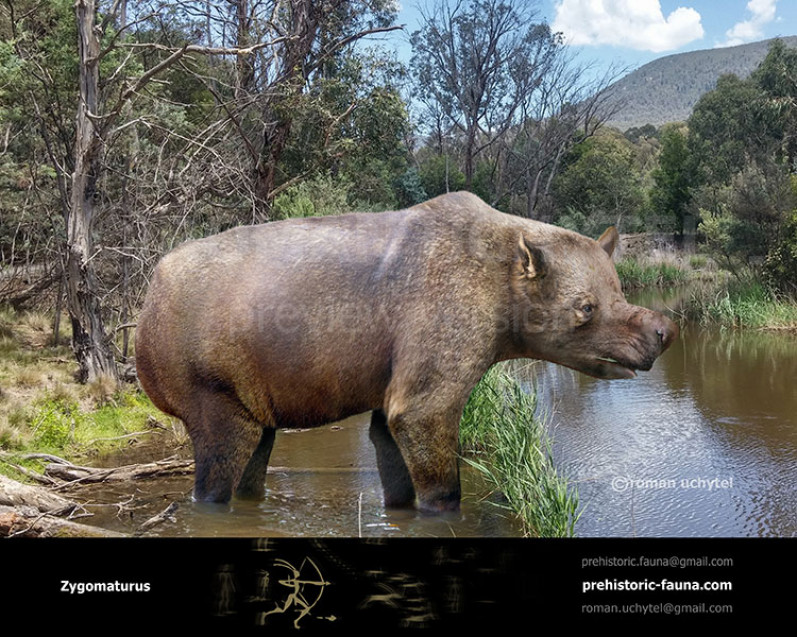
-797x638.jpg)
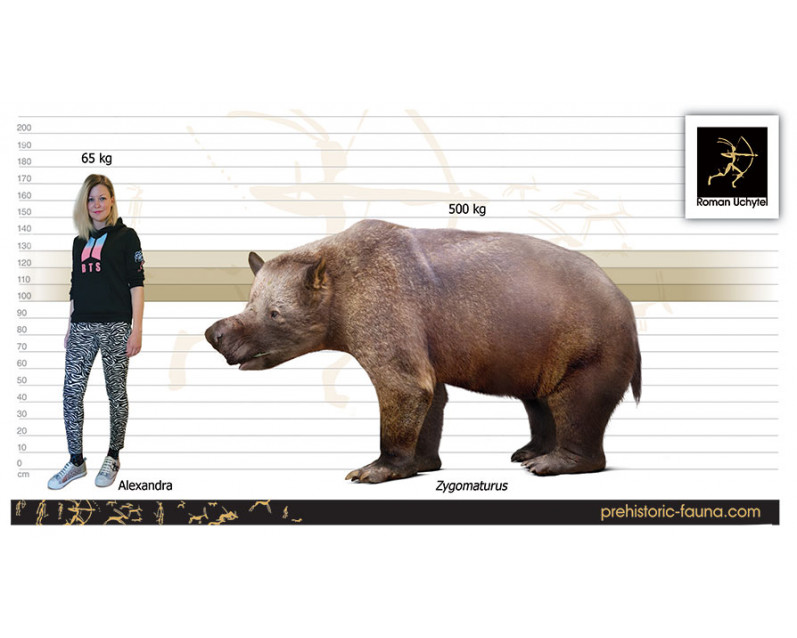

-70x56.jpg)

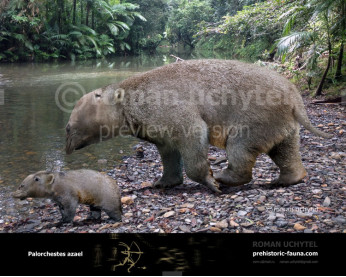
-346x277.jpg)
